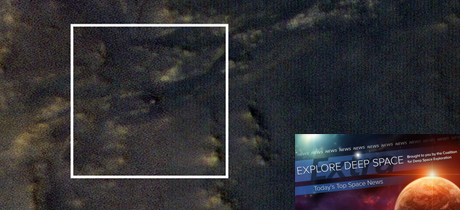In Today’s Deep Space Extra… NASA Administrator Jim Bridenstine to speak with NASA’s newest astronaut class, whose members will be part of the agency’s future deep space exploration plans. Future space explorers could be living in lunar and Martian lava tubes and supporting efforts to mine planetary surfaces for resources like water ice. NASA’s Opportunity rover, long silenced by a Martian dust storm, spotted in Martian valley. Ariane 5 launches on 100th mission.
Human Space Exploration
NASA Administrator talks training, future missions with newest astronaut class
NASA (9/25): NASA Administrator Jim Bridenstine will be joined in Washington on NASA TV at 10 a.m., EDT, by NASA’s latest class of new astronauts, 11 men and women, and two from the Canadian Space Agency, to discuss their experiences so far and take questions. Their backgrounds range from military pilots to medicine, engineering and the sciences. Story includes details on how to watch live.
Are Moon caves safe for astronauts? Earth’s lava tubes can help us find out
Space.com (9/25): Lava tubes could offer safe harbor from radiation for astronauts spending long stays on the Moon and Mars. The Lava Beds National Monument in California is offering scientists on Earth the opportunity to ensure future human explorers know what they will be getting into.
Space mining: Learning how to fuel an interplanetary gas station
National Public Radio (9/25): Starting this semester, the Colorado School of Mines is offering course work in a new and potentially promising field, extracting resources from the Moon and other planetary bodies to further human deep space exploration. Graduate researcher Hunter Williams left his job with Lockheed Martin to pursue the opportunity. “And it’s not going to be 100 years from now,” to told NPR. “It’s going to be maybe a decade from now.”
Space Science
Mars rover spotted in photo 3 months after it went silent
CBS News (9/25): NASA’s Opportunity rover, which landed on Mars in January 2004 for what was to be a 90 day mission, has forged on until silenced on June 11 by a global Martian dust storm. Efforts to restore communications with Opportunity continue. A recent image from NASA’s Mars Reconnaissance Orbiter shows Opportunity perched on the slopes of Mars’ Perseverance Valley 166 miles below.
Ancient Mars had energy source for potential life underground
Space.com (9/25): Ancient Mars had energy and that energy source was hydrogen from water broken into its chemical constituents, oxygen and hydrogen, by space radiation, according to a study by a Brown University researcher. The energy is estimated to have been sufficient to sustain a large number of microbes for billions of years, according to estimates.
Astronomers are tracking the interstellar asteroid Oumuamua to its home system
Universe Today (9/25): A year ago, astronomers in Hawaii were startled at the discovery of an asteroid from beyond the solar system, now named Oumuamua. The Max Plank Institute for Astronomy is leading an international effort to track the intruder to its extra solar source.
Chandryaaan-2: Several challenges to meet January 2019 deadline
Times of India (9/25): The India Space Research Organization faces challenges in meeting a January 3 launch date for Chandrayaan 2, a robotic Moon mission that includes a lunar orbiter, soft lander and rover. The challenges are focused on the lander and the soft touchdown strategy. The launch window for the challenging mission extends to March. One mission goal is to search for lunar ice.
Other News
Ariane 5 rocket lofts 2 satellites on milestone 100th launch
Space.com (9/26): The 100th Arianespace Ariane 5 rocket launched late Wednesday, placing two commercial communications satellites into orbit to serve customers in the Asia Pacific, Africa and eastern Europe. Though considered a workforce for its reliability, the Ariane 5 is to give way to the Ariane 6, a less expensive successor, around 2020. Wednesday’s launch was from French Guiana.
Spacecom cancels Amos-8 contracts with SSL and SpaceX
SpaceNews.com (9/25): Israeli satellite operator Spacecom on Wednesday cancelled contracts with SSL and SpaceX for the assembly and launch of the Amos-8 telecommunications satellite, stating it intends to find a domestic supplier for the satellite. Launch has been planned for 2020. Spacecom ordered Amos-8 from SSL as a replacement for the Amos-6 satellite destroyed during SpaceX’s Falcon 9 fueling mishap in September 2016, SpaceNews.com reports.

